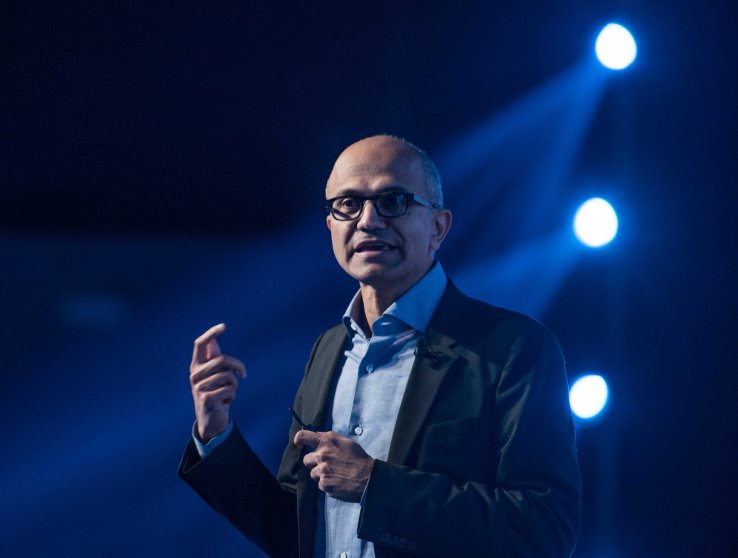

When long-time Microsoft COO Kevin Turner left the company last year, it marked a key turning point in the Satya Nadella era. Turner’s exit enabled Nadella to start putting his own stamp on the company, and the layoffs, strategy shifts and personnel changes we’ve seen recently are a reflection of that — it shows the company has moved on from one centered on Windows/Office to one based firmly in Azure and Office 365.
This is not a surprise, of course. Nadella has made his cloud aspirations clear from the earliest days, when he gave his mobile first/cloud first press briefing just 52 days into his tenure. Today, as Microsoft’s transformation continues, it shows a company putting the Ballmer era firmly into the rear-view mirror, while Nadella attempts to lead a massive cultural and technological transformation.
Since those first steps, the world has continued to change, and Nadella has tried to steer the ship as it does. At the company’s Build Developer Conference in May, he took the company to the next logical market level when he announced not just a mobile/cloud first vision — that’s so 2014 — but an artificial intelligence/machine learning focus that puts the company firmly on the road to the future of computing.
Meanwhile, under Nadella, the company has maintained a steady acquisition strategy, buying more than 40 companies since he came on board in 2014, many of which were cloud-based. The biggest by far was the $26 billion LinkedIn acquisition. Its most recent was at the end of last month when it purchased Cloudyn, a company that provides insight into the cloud usage of its customers on Azure and competing platforms.
Pushing buttons
For starters, when Turner left, Nadella put two people in charge of the worldwide sales organization who shared his cloud-centered vision: Judson Althoff became head of worldwide commercial business and Jean Phillipe Courtois took over global sales.
As we learned last week, Microsoft is planning to lay off thousands, many concentrated in sales jobs. It appears these layoffs are related to the overall shift in strategy and the new approaches introduced by Althoff and Courtois. According to a report in The Wall Street Journal last week, the company wasn’t just moving from a Windows-centric world, it also was moving away from a sales strategy that concentrated on verticals to one that looked more broadly at the enterprise and SMBs. It’s likely the cuts are at least partly related to that.
And against the backdrop of those layoffs, Microsoft also announced that Jim Dubois, another old guard executive who had been with the organization since 1993, and had been CIO since 2013, was exiting the company. It is worth noting he was appointed CIO the year before Nadella was promoted to CEO, indeed a different era for the company.
Along with that came word that Kurt DelBene had been elevated to the more modern title of Chief Digital Officer and would be taking over much of Dubois’ responsibilities.
All of these moves are part of the changing picture at Microsoft. As they transform, that means executives from the previous era are moving out, and ones whose thinking aligns with Nadella’s are moving up.
Pulling levers
On the product side, Microsoft announced a couple of new offerings today, and the timing can’t be a coincidence. First of all it introduced Azure Stack, a private cloud platform built on Azure cloud technology. It enables enterprise businesses that aren’t willing or able to use public cloud infrastructure services to install Azure components in their own data center.
Microsoft also introduced several new Office 365 products aimed at SMBs, including email marketing, listing and invoicing services.
Two products announced on the same day that encompass what the WSJ report from last week suggested would be the sales focus moving forward — enterprise and SMBs. While one could argue that the layoffs are about simple downsizing, when you combine them with some of the other moves we’ve seen, it seems like they are too related to the central strategy to be coincidental.
More than three years into his tenure, as Nadella continues to put his mark on the company, chances are we shouldn’t be surprised to see more changes like the flurry we saw in the last week. It’s inevitable when you start to institute transformational change across a large organization.
Featured Image: Satish Bate/Hindustan Times via Getty Images

